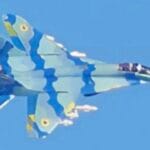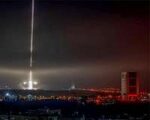Swedish defense giant Saab has signed a landmark agreement with Ukrainian partners to co-develop and manufacture advanced air defense systems on Ukrainian territory. The deal marks a significant step in strengthening Ukraine’s domestic defense industrial base while enhancing its layered air defense capabilities amid ongoing threats from Russian aerial attacks.
Strategic Partnership Between Saab and Ukraine
On October 10, 2025, Saab announced a strategic industrial cooperation agreement with the Ukrainian government and local defense enterprises. The partnership aims to establish joint production lines for short- and medium-range air defense systems tailored for both battlefield protection and critical infrastructure defense. While full technical details remain classified, initial reports suggest the collaboration will focus on systems such as the RBS 70 NG very short-range air defense (VSHORAD) system and components of the IRIS-T SLM medium-range surface-to-air missile system.
The announcement follows months of exploratory talks between Saab executives and representatives from Ukraine’s Ministry of Strategic Industries and Ukroboronprom. According to Swedish media outlets such as SVT Nyheter and statements from Saab CEO Micael Johansson, the company sees this move as both a contribution to European security resilience and an opportunity to expand its presence in Eastern Europe.
Systems Likely Involved: RBS 70 NG and IRIS-T SLM
While neither Saab nor Ukrainian officials have confirmed the exact systems involved in joint production, open-source intelligence points strongly toward two key platforms:
- RBS 70 NG: A man-portable laser-guided VSHORAD system capable of engaging aircraft, helicopters, UAVs, and cruise missiles at ranges up to 9 km. The latest NG variant includes automatic target tracking via integrated thermal sights. It has already been supplied to Ukraine in limited numbers via Western military aid packages.
- IRIS-T SLM: Although developed by Germany’s Diehl Defence (not Saab), Sweden is part of the multinational IRIS-T program. Saab produces radar components (such as Giraffe AMB) used in some IRIS-T-based air defense batteries. It is plausible that radar or fire control elements could be co-produced under license or adapted for hybrid configurations using Ukrainian chassis or C2 infrastructure.
The potential integration of these systems into a broader multi-layered Ukrainian Integrated Air and Missile Defense (IAMD) architecture would significantly enhance coverage against Russian cruise missiles, loitering munitions (e.g., Shahed-136), glide bombs like UMPK-modified FABs, and tactical aviation threats.
A Boost for Ukraine’s Indigenous Defense Industry
This cooperation represents more than just arms transfers—it signals a shift toward indigenous capability development within wartime conditions. By localizing production inside Ukraine—likely near Dnipro or Lviv—Saab enables reduced logistical dependency on foreign supply chains while building long-term industrial resilience.
The move aligns with Kyiv’s broader strategy of transitioning from emergency imports toward domestic production across multiple domains including UAVs (e.g., Bayraktar TB2 assembly), artillery shells (in partnership with Rheinmetall), armored vehicles (via KMW-Fortress JV), and now integrated air defenses.
Ukrainian Deputy Prime Minister for Strategic Industries Oleksandr Kamyshin emphasized that such partnerships are essential not only for sustaining current operations but also for rebuilding post-war deterrence capacity based on NATO-standard technologies.
NATO Interoperability as Strategic Objective
The choice of Western-origin systems like RBS 70 NG reflects Kyiv’s long-term goal of aligning its force structure with NATO standards. Unlike legacy Soviet-era platforms such as Strela-10 or Buk-M1—which face spare parts shortages—the new generation VSHORAD/SHORAD solutions offer digital C4ISR integration potential via Link-16 or other STANAG-compliant protocols.
This will allow seamless integration into joint command networks alongside assets like NASAMS (already deployed in Kyiv), German-delivered Skynex/Skyranger batteries under procurement, Gepard SPAAGs still active near Kharkiv frontlines, Patriot PAC-3 units guarding critical nodes like Odesa port facilities—and potentially future acquisitions such as SAMP/T or Israeli David’s Sling if political constraints ease.
Operational Implications Amid Ongoing Conflict
The timing is crucial: Russia continues its campaign of drone swarms and missile barrages targeting energy infrastructure ahead of winter. Enhancing point-defense capabilities through domestically produced VSHORAD units could help mitigate attrition rates among imported Western stocks while enabling mobile coverage over dispersed logistics hubs near frontline sectors like Zaporizhia or Kupiansk.
If successful within a compressed timeline—potentially by mid-to-late-2026—Ukraine could field dozens of locally assembled launchers supported by trained crews from its expanding Air Force Ground-Based Air Defence Command (GBADC). This would mark a rare wartime achievement in scaling up high-tech weapons manufacturing under fire—a feat few nations have attempted since World War II.










